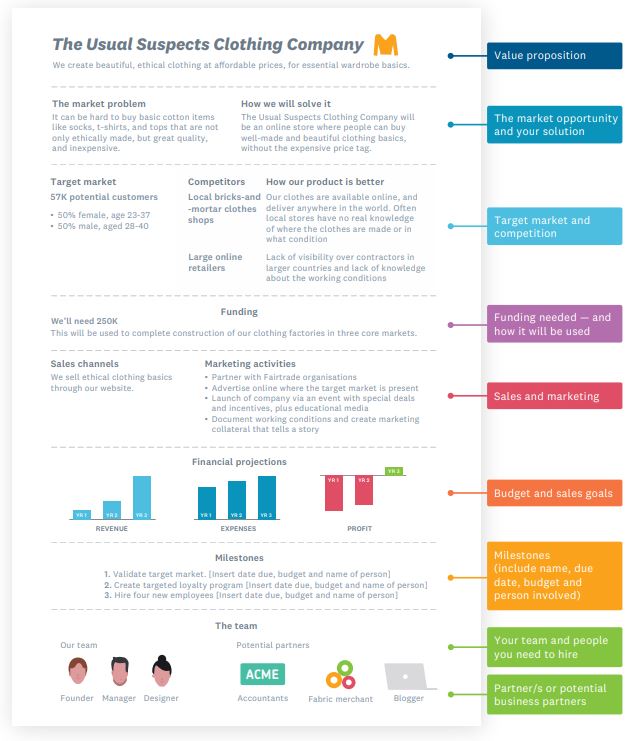
Are you daunted by the thought of writing a big, formal business plan? You’re not alone. A lot of people start and never finish, but you don’t have to be one of them. You can start with smaller tasks and work your way up.
What is a business plan anyway?
Think about your business plan as a road map. You know where you want to go, you just need to write down the directions to get there. The good news is it doesn’t have to be super detailed straight away. That’s because there are two types of business plan:
- the lean one-page plan, which is a great way to get going and build ideas
- the more formal long plan, which you’ll need if and when you’re looking for business funding
The content of each is broadly the same. You say who the target market is, why they need your product or service, how you’ll reach them, who you’re competing with and, of course, how much money you’ll make.
How to do a fast, one-page business plan
The key to a one-page plan is to start out simple, and grow it as you go. You can begin with a few headings and some bullet points mapping out your vision, goals, milestones and financial forecasts.
Things will keep changing, and new information will come in, so think of it as a living document. Keep tweaking it as things evolve. Sections for a one-page business plan:
- Value proposition Make sure the reader understands the unique value you’ll provide in a few clear, simple sentences. Cut the jargon and fluff, and get to the point.
- The problem you’re solving Expand on the problem that you’re solving. Imagine that you’re talking to someone who’s never heard your idea before. What is it about your solution that hasn’t been done well before?
- Target market and competition Who are you selling to, and what other choices do they have? How are you going to serve them better? This is where you need to show you’ve done some market research.
- Sales and marketing How will people learn about you? Will you use social media? Do your customers read trade publications? Or will you sell to them in person? Figure out where your target audience is, and go there.
- Budget and sales Do some forecasts of sales and outgoings. What will your margin be on each sale? Will it be enough? How many sales will you need to make a profit? Use the figures to define ‘success’.
- Milestones Milestones will help you keep an eye on the big picture. For each milestone, say why it’s important, note what (or who) you need to make it happen, and put a due date on it. This helps break everything you need to do down into manageable pieces.
- The team Who’s part of your business and why? Write a couple of lines for each person, including their goals and responsibilities. Do this even for roles you haven’t yet filled.
- Funding Identify how much you need (or already have) and what it’s for. When will repayments be made, and when do you expect to have paid it all back?
When writing a business plan that’s just one page, you need to keep things short and to the point. If there are lots of details for one of the sections, keep them on a separate document. Just run with a high-level summary in the one-page plan. It’s often harder to write something short, so take a few passes. Whittle it down as you go. Make your language clear and simple. A 12-year-old should be able to understand it.
For some, one page is enough
Some people start a business with little more than a one-page plan. Rather than doing a whole heap of research, they launch their service or product quickly and watch the reaction of paying customers. After gathering that feedback, the business adjusts and improves their offering as fast as possible. This lean startup methodology doesn’t suit all businesses. If you need finance from banks or investors, then you’ll probably need a more complete business plan.
Example of one-page business plan
You’ll be surprised what you can fit on a single page. Use bullets, be concise, and save the details for other documents

Source: Xero







